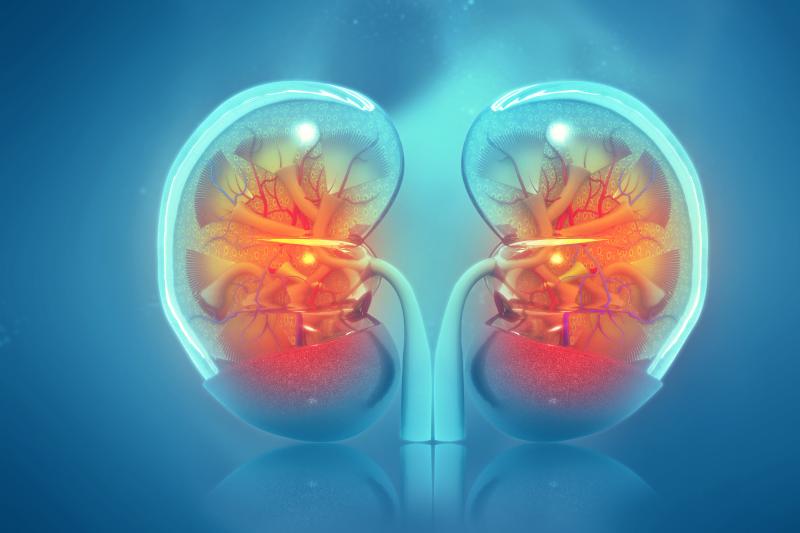
A recalibrated, pooled version of the Kidney Failure Risk Equation (KFRE) is better than existing scores for the prediction of end-stage kidney disease (ESKD) in chronic kidney disease (CKD) patients, according to a recent Singapore study.
“Using electronic health records linked with national renal registry, we found that the recalibrated KFRE had better performance than existing KFRE equations in terms of having a lower Brier score, less bias and improved precision for predicting ESKD in multiethnic patients visiting the primary care clinics,” said researchers.
Three different KFREs for the prediction of ESKD were tested in 17,271 CKD patients (mean age, 75±9 years; 51 percent female): the original and the KFRE version calibrated for North Americans and non-North Americans. A fourth KFRE version, recalibrated for Southeast Asians, was also used. The cohort was then linked to the Singapore Renal Registry for identification of ESKD onset.
The KFRE score recalibrated for Southeast Asians had the best calibration of all the tools tested, reflecting the smallest Brier score at 2 (square root: 2.0 percent vs 6.1 percent to 9.1 percent) and 5 (square root: 2.8 percent vs 4.0 percent to 9.3 percent) years. The Brier score was calculated as the square of the difference between the observed and the predicted ESKD risk at different time points. [BMC Nephrol 2019;20:451]
Bias, defined as the median difference between the observed and predicted risk of ESKD, was also lowest for the recalibrated score at 2 (1.8 percent vs 3.2 percent to 3.6 percent) and 5 (2.5 percent vs 3.3 percent to 5.2 percent) years, as opposed to the three other scores.
Moreover, the Southeast Asia-recalibrated KFRE model showed the best precision at both time points (2 years: 0.5 percent vs 3.5 percent to 4.2 percent; 5 years: 0.5 percent vs 1.7 percent to 5.2 percent). Precision was calculated as the interquartile range of bias.
“Compared to the observed risks, the Recalibrated Pooled KFRE [Southeast Asia] slightly underestimated the predicted ESKD risks at lower KFRE risk categories,” while it overshot the risk a bit at higher categories, the researchers pointed out.
The recalibrated tool had an area under the curve [AUC] of 0.96 and 0.94 for the estimation of ESKD risk at 2 and 5 years, respectively, outperforming estimated glomerular filtration rate (eGFR) alone at both time points. AUCs for the other KFRE tools performed comparable with the recalibrated score.
“In addition, 5-year KFRE thresholds ranging 10 percent to 16 percent for nephrologist referral and 2-year KFRE risk threshold at 45 percent for dialysis planning resulted in high referral efficiency and substantially improved reclassification of ESKD risks relative to eGFR threshold,” the researchers said.
“Future studies are warranted to validate our findings, evaluate the clinical and cost effectiveness of a CKD model of care that integrates [electronic health records] and the KFRE in primary care settings serving Asians as well as globally,” they added.